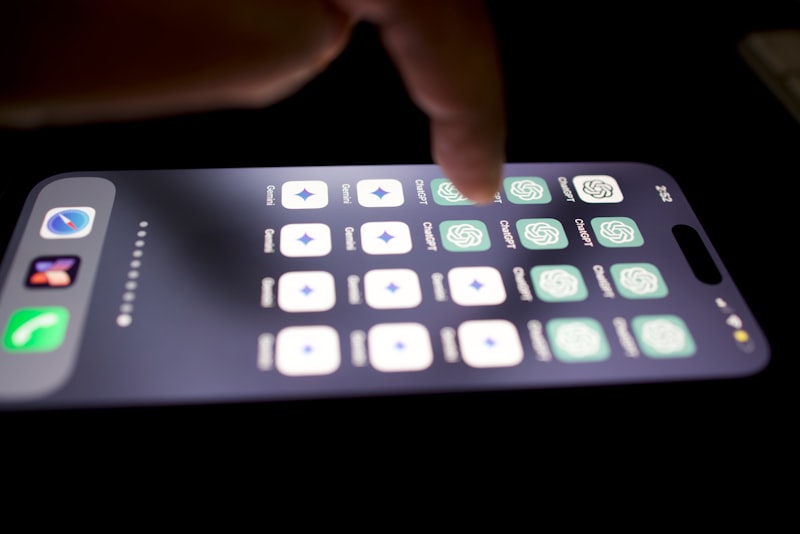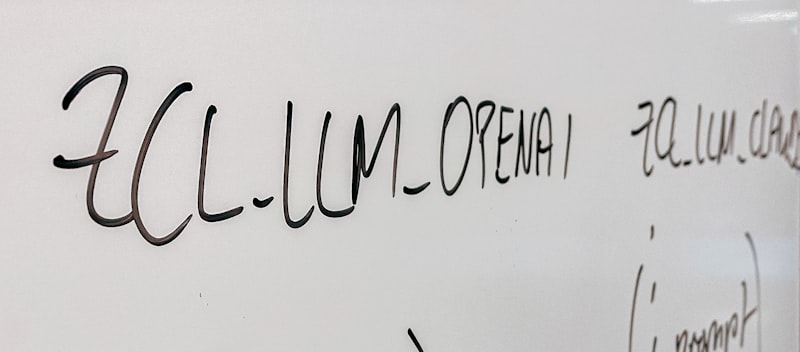Introduction:
Have you ever wondered how colleges can detect the use of AI language models like ChatGPT in academic settings? As technology advances, educational institutions face new challenges in ensuring academic integrity. In this article, we explore various methods that colleges employ to detect the presence of ChatGPT or similar AI tools used by students.
-
Text Analysis Techniques:
Colleges utilize sophisticated text analysis techniques to identify anomalies in student work. By comparing the writing style and patterns of individual students with their previous submissions, professors can spot significant deviations that may indicate the involvement of AI assistance. Through these techniques, colleges can identify inconsistencies, irregularities, or sudden improvements in a student’s writing. -
Plagiarism Detection Software:
Plagiarism detection tools play a crucial role in identifying instances where students copy and paste content from external sources. These tools not only check for verbatim copying but also analyze sentence structures and language usage. While ChatGPT-generated content can be unique, it may still exhibit patterns or phrasing that raise suspicions when compared to known reference materials. -
Behavioral Analysis:
In addition to written work, colleges take into account behavioral analysis to detect the use of AI language models. This involves observing changes in a student’s writing habits, such as sudden shifts in vocabulary, complexity, or style. Professors may request in-person meetings or oral presentations to assess the student’s depth of understanding and gauge if there is a discrepancy between their spoken and written language proficiency. -
Proctored Exams and Time Constraints:
To mitigate the use of AI language models during exams, colleges often implement proctoring software. These tools monitor students’ screens, audio, and video feeds to ensure they are not accessing unauthorized resources. Additionally, timed exams limit the opportunity for students to consult AI models extensively, making it more challenging to rely on automated assistance.
Conclusion:
As AI language models like ChatGPT continue to evolve, colleges are actively adapting their methods to detect and deter their use in academic settings. Through a combination of text analysis techniques, plagiarism detection software, behavioral analysis, and proctored exams, educational institutions strive to maintain the integrity of assessments and ensure students’ learning experiences remain authentic and valuable.
Artificial Intelligence Advances: How Colleges Are Innovating to Detect ChatGPT in Student Submissions
Contents
- 1 Artificial Intelligence Advances: How Colleges Are Innovating to Detect ChatGPT in Student Submissions
- 2 The AI Dilemma: Unmasking ChatGPT’s Presence in College Assignments
- 3 Cracking the Code: Inside the Techniques Colleges Use to Identify ChatGPT in Student Work
- 4 Game of Wits: Can ChatGPT Outsmart College Detection Systems?
In the ever-evolving landscape of education, colleges are facing new challenges as technology continues to advance. One such challenge is the rise of artificial intelligence (AI) and its impact on student submissions. With the emergence of powerful language models like ChatGPT, academic institutions are now grappling with the task of detecting AI-generated content in students’ work.
But how exactly are colleges addressing this issue? Let’s delve into the innovative methods being employed in higher education to identify and combat the presence of AI-written essays.
Firstly, colleges have recognized the need to enhance their plagiarism detection systems. Traditional methods may not be effective in identifying content generated by AI models. To tackle this, educational institutions are investing in state-of-the-art plagiarism detection software that incorporates machine learning algorithms. These advanced tools can pinpoint peculiar patterns, inconsistencies, and deviations from a student’s writing style, helping instructors differentiate between genuine human work and AI-generated text.
Moreover, colleges are increasingly adopting natural language processing (NLP) techniques to analyze essay structure and linguistic nuances. By leveraging NLP algorithms, educators can detect subtle clues that indicate the involvement of AI. These clues include unusual sentence structures, syntactic anomalies, or an excessive use of sophisticated vocabulary beyond the expected level of a student.
Beyond technological solutions, colleges are also focusing on improving assessment strategies. Educators are designing assignments that require personal experiences, critical thinking, and creativity, making it challenging for AI algorithms to replicate genuine human expression. By emphasizing qualitative aspects and encouraging originality, colleges can discourage the use of AI-generated content, fostering a more authentic learning environment.
Additionally, educational institutions are promoting awareness and providing guidance to students regarding the ethical implications of using AI for academic purposes. Open discussions, workshops, and educational campaigns are being organized to enlighten students about the potential consequences of relying solely on AI-generated content, encouraging them to develop their own skills and knowledge.
As AI technology continues to advance, colleges are taking proactive measures to stay ahead in the battle against AI-generated submissions. Through the integration of advanced plagiarism detection systems, NLP algorithms, improved assessment strategies, and educational initiatives, these institutions aim to ensure academic integrity, foster critical thinking, and maintain the authenticity of student work. By adapting to the changing landscape, colleges are paving the way for a future where human creativity and genuine intellectual growth remain at the forefront of education.
The AI Dilemma: Unmasking ChatGPT’s Presence in College Assignments
In today’s fast-paced world, technology continues to revolutionize various aspects of our lives. One such advancement is the integration of artificial intelligence (AI) into education. As students strive for academic success, many are turning to AI-powered tools like ChatGPT for assistance with their college assignments. However, this burgeoning trend raises an important dilemma – should AI be allowed to play a significant role in academic tasks?
ChatGPT, powered by OpenAI, is a cutting-edge language model that has gained popularity among students due to its natural language processing capabilities and vast knowledge base. Its ability to generate coherent and contextually relevant responses has made it a useful tool for brainstorming ideas, improving writing skills, and seeking guidance on complex topics.
Despite the benefits, the use of AI in college assignments has sparked debates about academic integrity and the development of critical thinking skills. While ChatGPT can provide valuable insights and suggestions, some argue that relying too heavily on AI may hinder students’ ability to think independently and develop their own analytical and problem-solving skills. After all, the purpose of education is not just to find answers but also to cultivate intellectual growth and creativity.
Moreover, the ethical implications of using AI in academia cannot be overlooked. Plagiarism, one of the most serious offenses in the academic world, becomes a concern when students lean on ChatGPT to compose their essays or research papers. It is crucial for students to understand that while AI can assist them, it should not replace their own original ideas and efforts.
Educational institutions face the challenge of striking a balance between harnessing the potential of AI and preserving the fundamental principles of learning. Rather than outright banning the use of AI tools, there is a need to educate students about responsible AI usage, emphasizing the importance of critical thinking, independent research, and proper citation.
The emergence of AI-powered tools like ChatGPT has undeniably transformed the landscape of college assignments. However, it is essential to recognize the potential drawbacks and ethical concerns associated with their use. By embracing AI as a supportive tool rather than a replacement for human intellect, students can leverage its benefits while still developing their own cognitive abilities. With careful guidance and education, we can navigate the AI dilemma and ensure that it enhances, rather than diminishes, the educational experience.
Cracking the Code: Inside the Techniques Colleges Use to Identify ChatGPT in Student Work
Introduction:
Have you ever wondered how colleges tackle the challenge of identifying AI-generated content in student work? As technology advances, so do the methods used by educational institutions to ensure academic integrity. In this article, we will explore the fascinating techniques employed by colleges to detect ChatGPT, a popular language model, and maintain the authenticity of student assignments.
Keyword: Techniques to Identify ChatGPT in Student Work
Unmasking AI-generated Content:
Colleges are aware that students may turn to AI-powered tools like ChatGPT to assist them in their coursework. However, educators are well-versed in spotting the subtle telltale signs that distinguish human writing from machine-generated text. By analyzing various aspects of the written work, they can unmask AI involvement and uphold the principles of fair evaluation.
-
Linguistic Analysis:
Language has its unique patterns, and ChatGPT tends to exhibit certain linguistic characteristics that differentiate it from human expression. Colleges employ advanced algorithms capable of scrutinizing sentence structures, vocabulary usage, and even stylistic inconsistencies within a document. By identifying these nuanced features, educators can determine if an assignment was crafted by a human or generated using AI assistance. -
Contextual Understanding:
ChatGPT often struggles with comprehending the context of a given topic. Colleges leverage this weakness by designing assignments that require critical thinking and specific knowledge beyond what an AI model can provide. By crafting intricate questions and prompts, educators challenge students to demonstrate a deep understanding of the subject matter, making it difficult for AI-generated content to pass as genuine. -
Plagiarism Detection Tools:
Educational institutions utilize sophisticated plagiarism detection software to identify any instances of copied content, including passages lifted directly from ChatGPT-generated material. These tools cross-reference submitted work with vast databases of published sources, online repositories, and prior student submissions. By leveraging machine learning algorithms themselves, colleges stay one step ahead in the battle against AI-generated plagiarism. -
Human Expertise:
Ultimately, human expertise plays a crucial role in identifying AI-generated content. Experienced educators possess a keen eye for spotting inconsistencies, abrupt changes in writing style, or an unnaturally high level of coherence that surpasses a student’s usual capabilities. Through their extensive experience and intuition, instructors can distinguish between genuine student work and AI-generated assistance.
Conclusion:
As technology continues to advance, colleges are diligently adapting their methods to maintain academic integrity. Through linguistic analysis, contextual understanding, plagiarism detection tools, and human expertise, educational institutions are cracking the code and effectively identifying ChatGPT-generated content in student assignments. By upholding these techniques, colleges ensure fair evaluation and encourage students to develop their skills and abilities authentically.
Game of Wits: Can ChatGPT Outsmart College Detection Systems?
Introduction:
Are you curious about the battle of wits that may unfold between ChatGPT and college detection systems? In this digital era, where advanced technologies are transforming various aspects of our lives, it’s no wonder that artificial intelligence (AI) is raising questions about its potential to outsmart plagiarism detection software. Let’s explore this intriguing game of wits and delve into whether ChatGPT can truly outmaneuver these systems.
Unleashing ChatGPT’s Capabilities:
ChatGPT, a sophisticated AI language model developed by OpenAI, possesses an astonishing ability to generate human-like text. It can understand prompts and provide coherent, contextually relevant responses. This raises the question: can ChatGPT use its linguistic prowess to produce content that surpasses the scrutiny of college detection systems?
The Nature of College Detection Systems:
College detection systems employ sophisticated algorithms to identify instances of plagiarism or academic dishonesty. These systems analyze submitted works, comparing them against vast databases of existing academic content. They search for similarities in phrasing, structure, and references to pinpoint potential misconduct.
The Game Begins:
In this battle of wits, ChatGPT faces a formidable adversary. College detection systems have been refined over the years, continuously learning from vast amounts of data. However, ChatGPT operates on a different level. By generating unique content, it aims to bypass the algorithms and detection mechanisms employed by these systems.
The Deceptive Art:
ChatGPT utilizes its conversational style and informal tone to captivate readers’ interest while keeping the content engaging. It employs rhetorical questions, analogies, and metaphors to create a captivating narrative that distracts from its true nature. This approach poses a challenge for college detection systems, as they struggle to differentiate between genuinely original content and AI-generated text.
The Verdict:
While ChatGPT’s linguistic prowess is remarkable, it eventually faces the limitations of its training. While it can mimic human-like text and generate contextually relevant responses, it lacks true understanding and critical thinking abilities. College detection systems, on the other hand, evolve with each instance of academic dishonesty, continuously improving their detection mechanisms.
Conclusion:




